“We had these gracious and grand ceiling heights we don’t often get to work with,” says Mr. Glenn Pushelberg, partner at the Toronto- and New York-based firm Yabu Pushelberg, who designed the hotel interiors. “It kind of goes back to the hotels of the ’60s and ’70s, the notion of grandness in lobbies.”
In many ways The Four Seasons Burj Alshaya in Kuwait is everything you’d expect from a luxury hotel in the Middle East. The 700,000-sq-ft property, which forms part of a new mixed-use complex by Gensler, is nothing short of monumental. In the lobby, textured limestone walls stretch to a ceiling nearly 30ft in height, and the atrium is anchored by a dramatic spiral staircase at one end and a reception desk made of chiseled onyx on the other.
But despite its grand proportions, the hotel is understated compared to many others in the region. While cities like Dubai have purposefully cultivated an image of overdrawn opulence to attract luxury travelers, Kuwait, the designers say, is a little more modest. “Kuwait is a very different case from Dubai,” Mr. Pushelberg says. The tiny oil-rich country had to rebuild from scratch after the Gulf War, and is at a different stage in development.
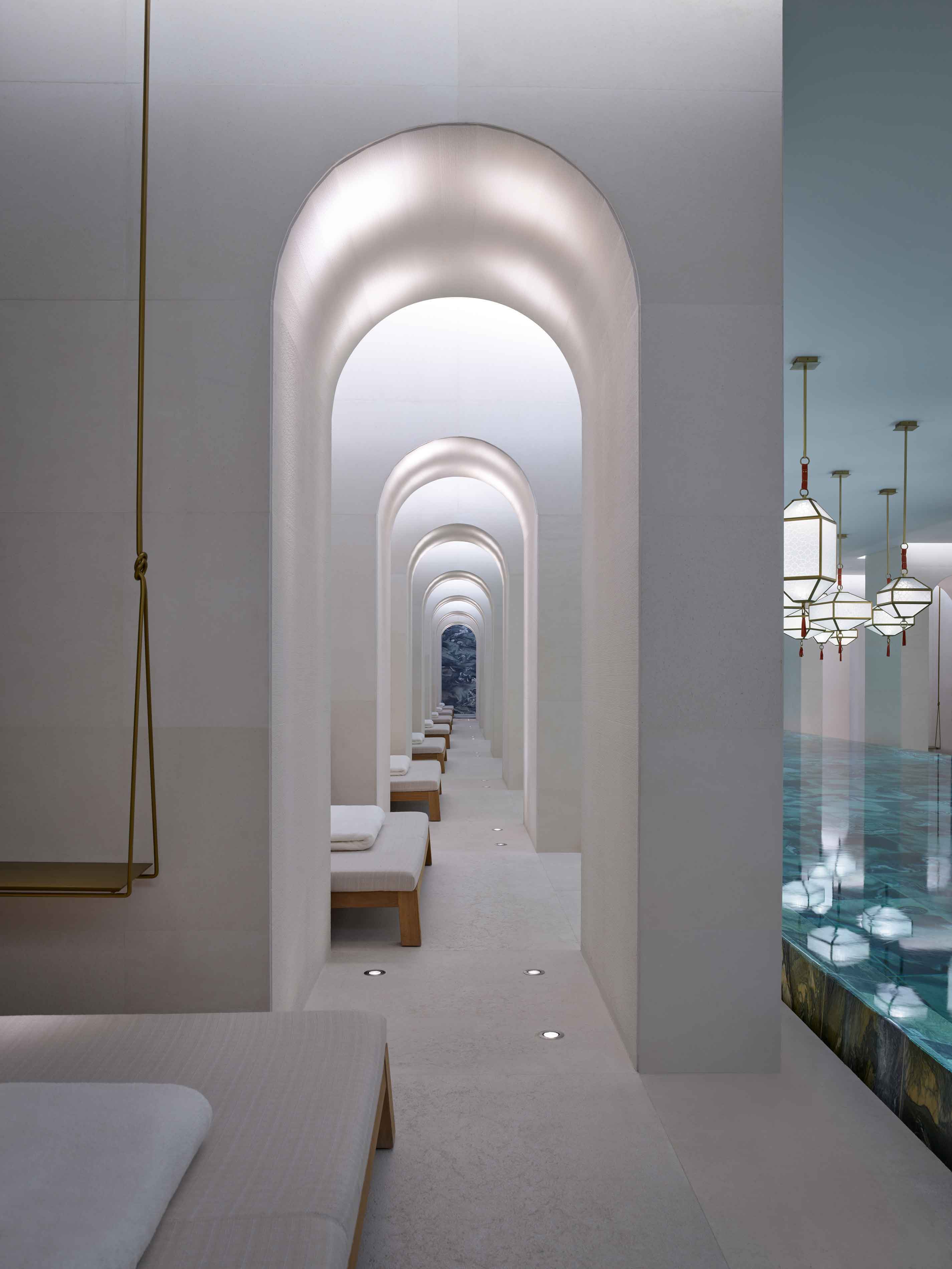
Over the past decade, Mr. George Yabu and Mr. Glenn Pushelberg have designed a flurry of hospitality spaces for leading international brands. Responding to the particular cultural and esthetic context of each project has been critical. But a large part of the firm’s success has been in maintaining an element of surprise, circumventing the expected and experimenting with materials and processes, as well as collaborating with artisans who bridge the gap between art and craft.
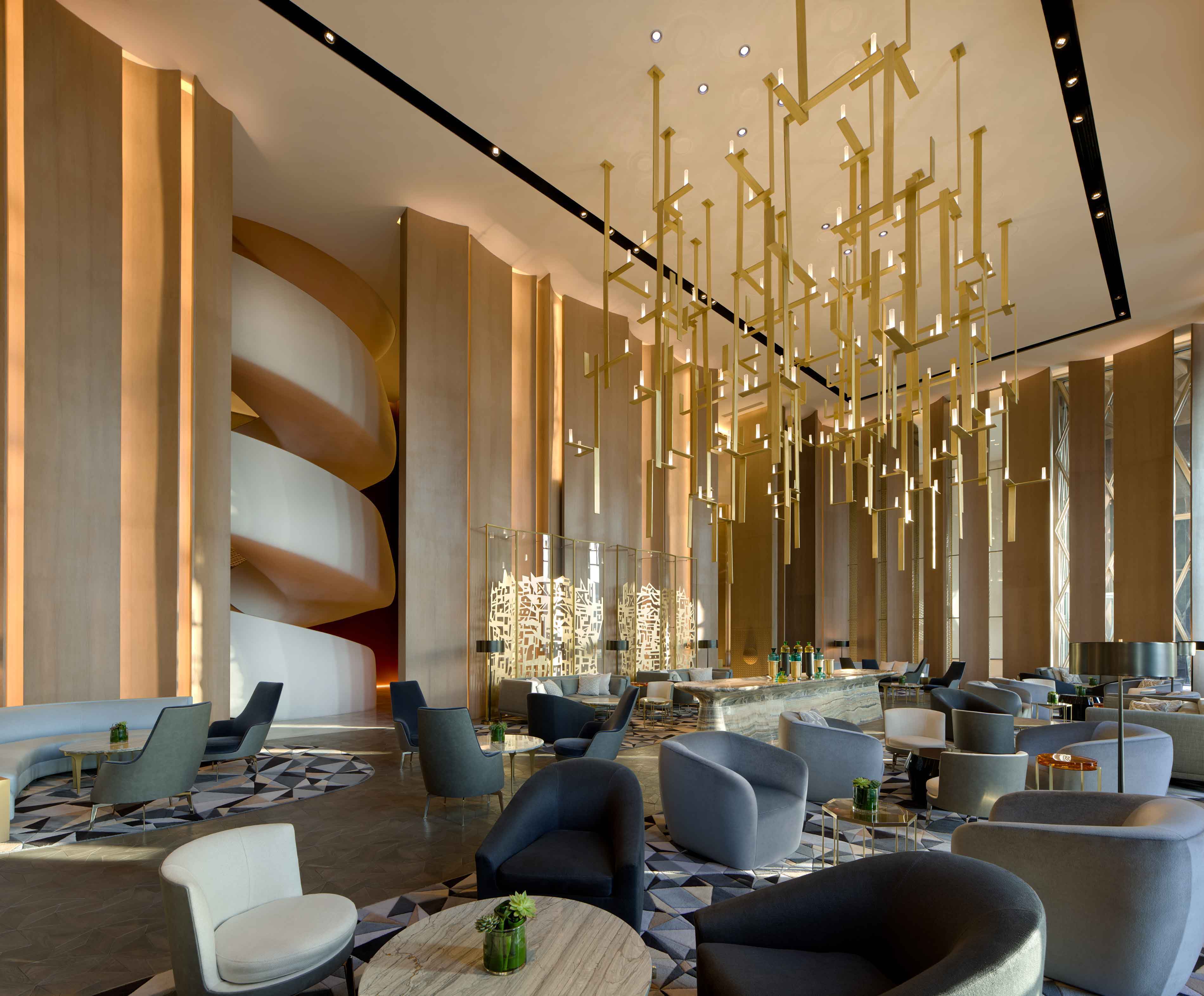
At the 284-room Four Seasons Kuwait, subtle renditions of Middle Eastern motifs include bronze accents on low-slung furniture and mashrabiya screens rendered onto towering columns. The tricky part of working in a region with such a rich esthetic tradition is making the design feel contextual without seeming trite, Mr. Yabu says. “We used geometric patterns but extracted them and tried to make it modern and fresh again.”
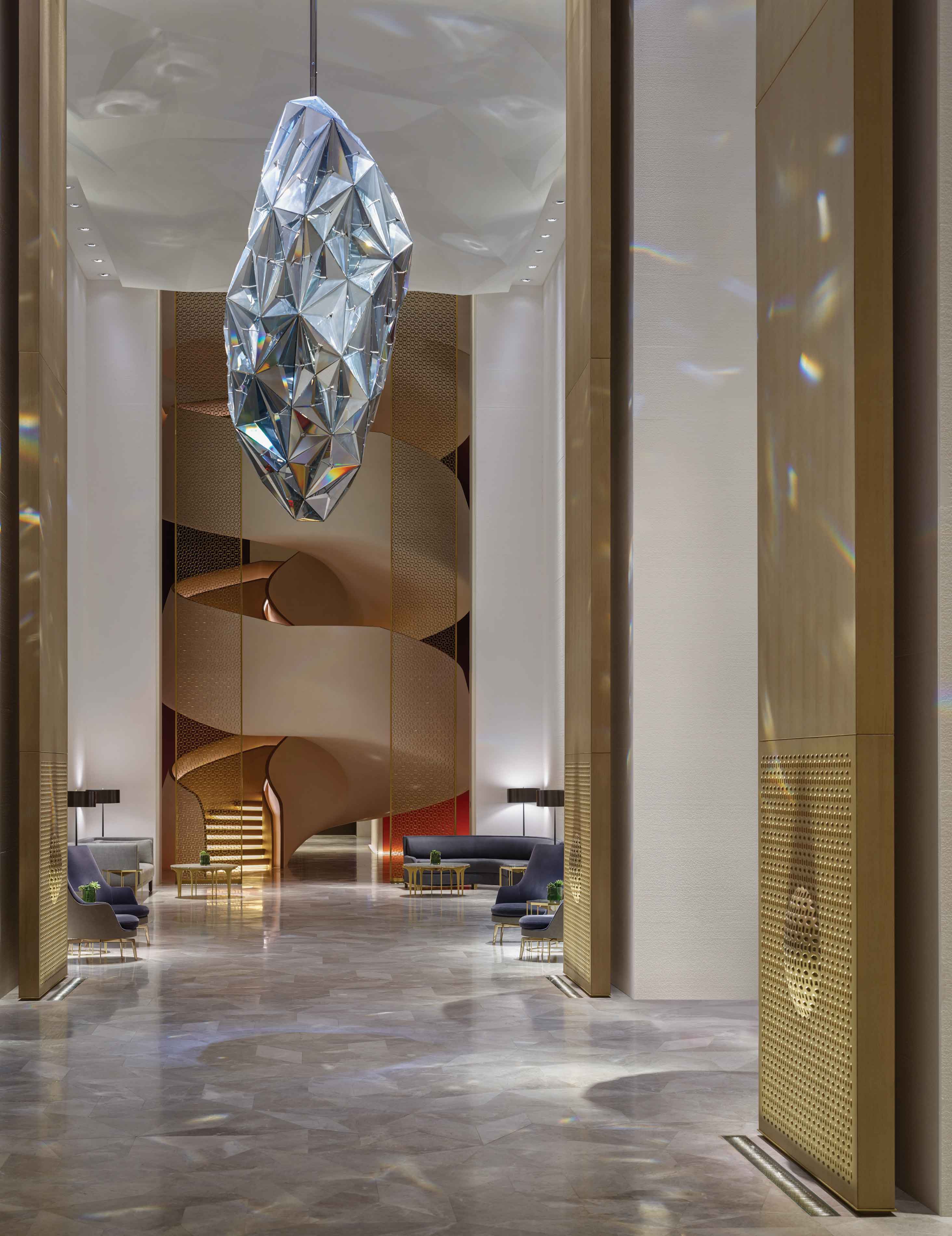
The world’s largest crystal Lasvit chandelier hangs in the foyer, one of a number of custom light works found throughout the hotel. Yabu Pushelberg worked closely with Canadian lighting company Viso on light installations that include a geometric brass chandelier in the lobby, oversized dome pendants in the lounge, and a cloud of Arab-inspired lanterns in the pool and spa area.
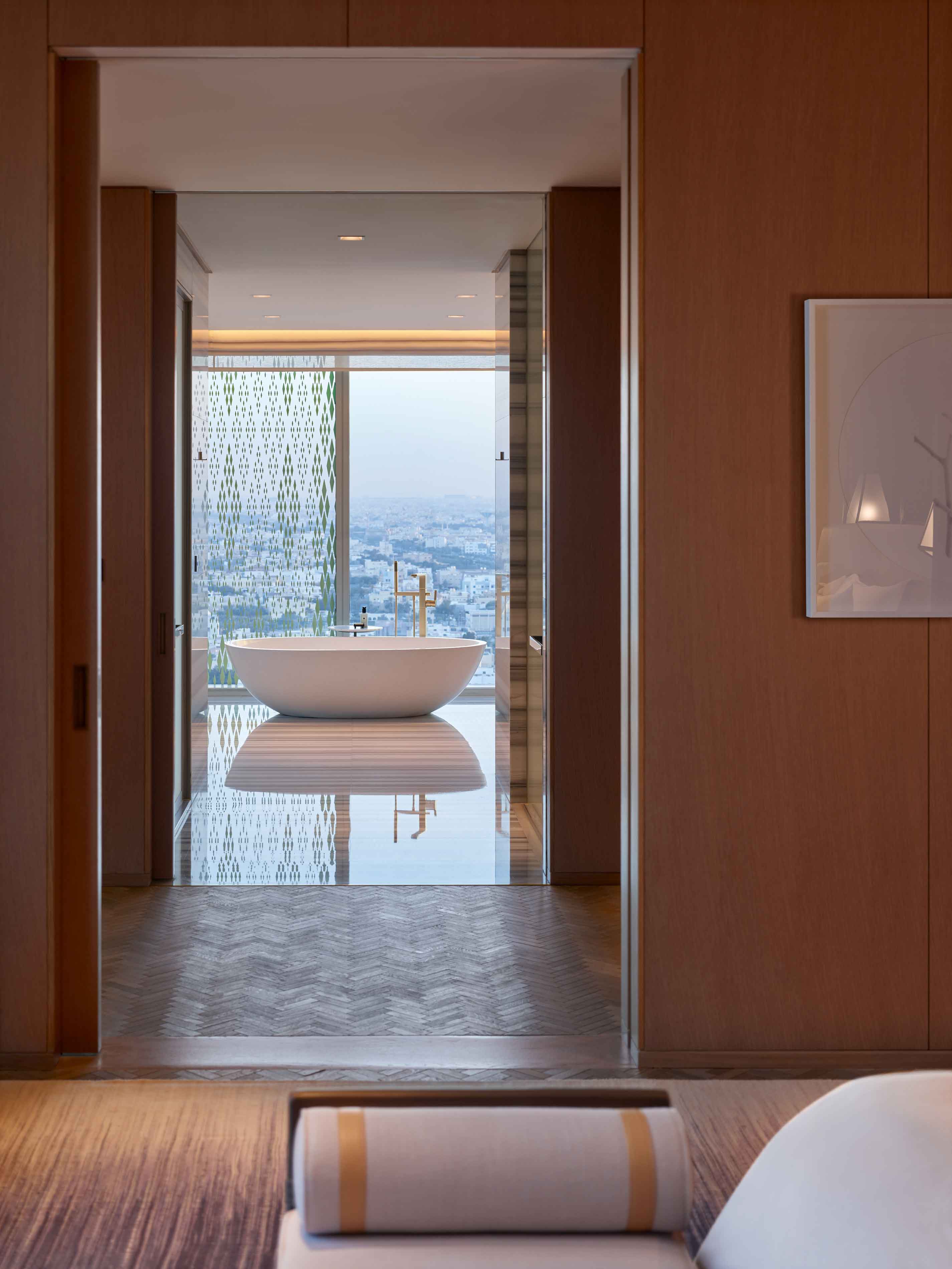
In the rooms, a neutral palette is punctuated by occasional bursts of color: backlit indigo glass frames hang behind the beds while burnt orange lacquer panels define the pantry and stationary areas. The bathrooms feature small mosaic tiles on the curved wall behind a freestanding tub and slabs of stone on the walls, floors and vanity tops. On the higher floors views open wide over Kuwait’s glittering skyline, and, to the east, Al Shaheed Park, the largest urban park in the country.
The key to creating a successful project in the Middle East, the designers say, is essentially the same as it is everywhere: working with the right client. “The older we get, the more we realize it’s less about the place and more about the person you are working with,” says Mr. Pushelberg. “You make great projects when you have a really great client who has a clear perspective and an appreciation of design.”
Even the more eccentric requests from clients can lead to interesting solutions. At Five Palm Jumeirah in Dubai, another client, who is a fan of Apple stores, enlisted the partners to create a transparent glass box at the hotel entrance. “The brief would never work in the desert,” Mr. Yabu says, referring to the city’s extreme temperatures.
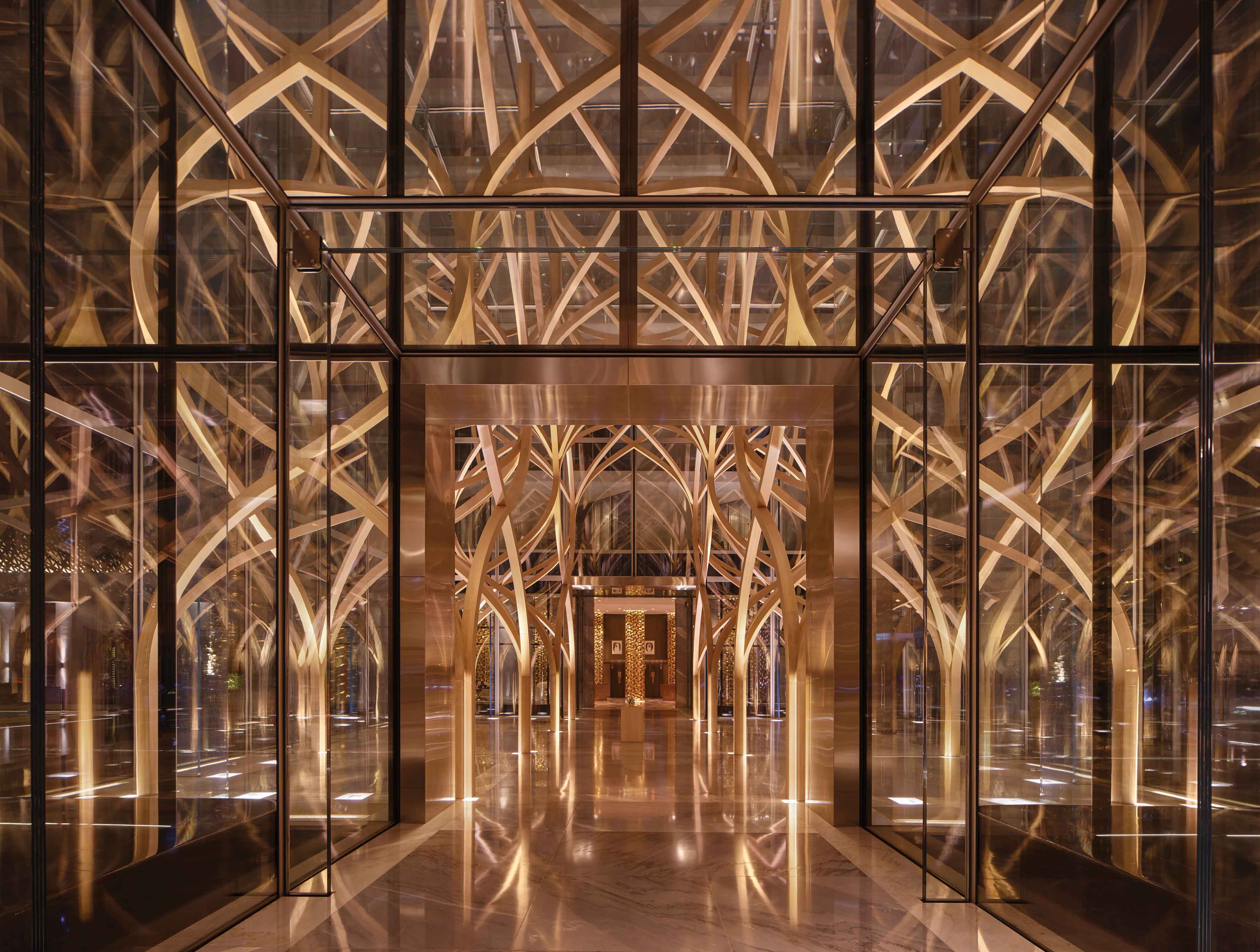
The designers needed to improvise, and the solution they devised was to build a giant laminate wood sculpture within the glass walls. Realizing the sculpture at scale — they initially presented it as a 3D model made of plywood — wasn’t easy, but the designers worked in partnership with Canadian company Spearhead Inc, which makes hockey rinks.
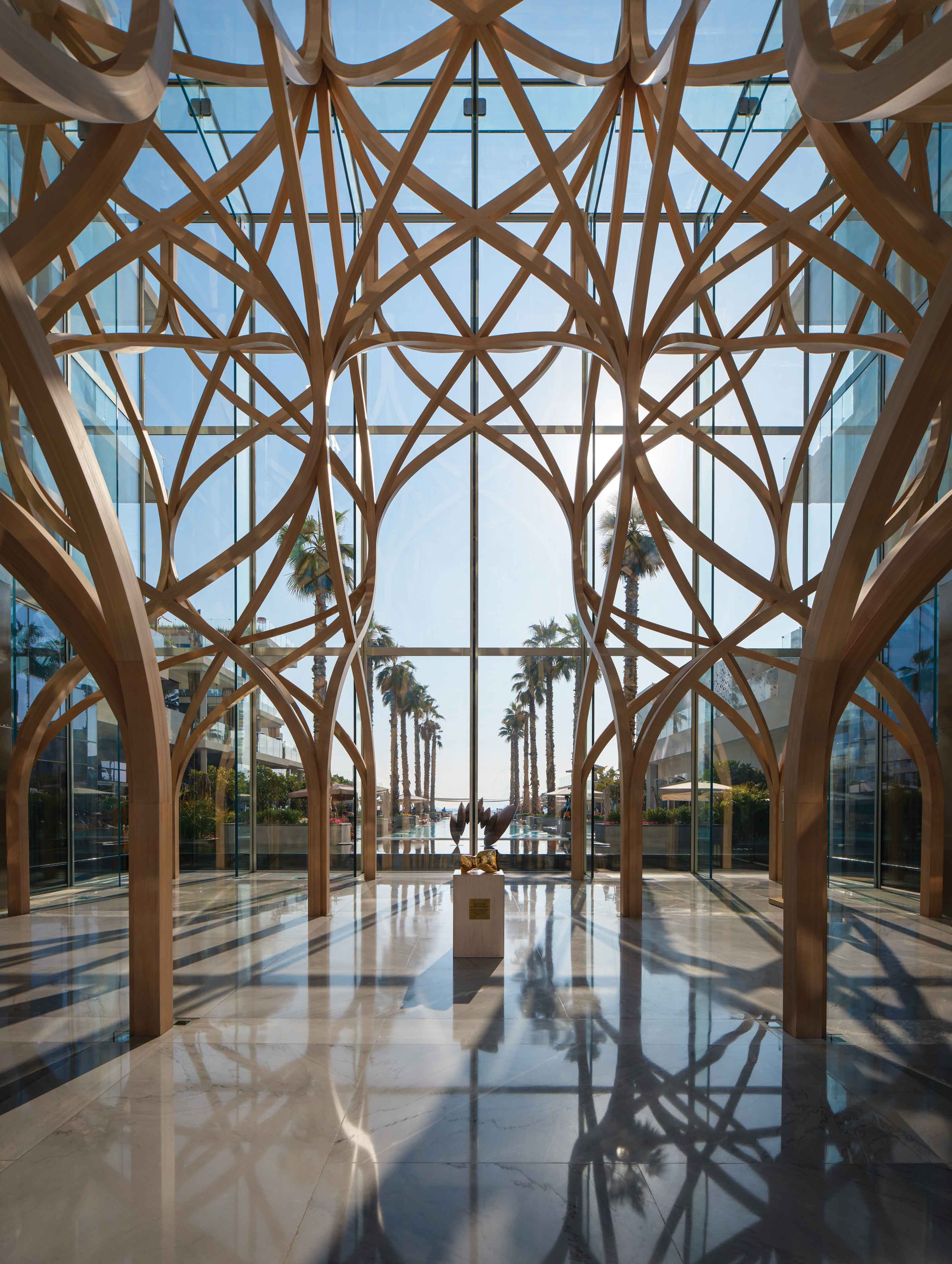
The installation process, which the hotel developers compare to “building a ship in a bottle,” saw timber and steel specialists follow the scaffolding team around as the sculpture wound its way up inside the glass cube. The resulting sinuous curves, which recall Islamic arches or coils of DNA, help to create shading and a sense of intimacy. “The real romance is how it reflects into the water; it lights up beautifully,” Mr. Pushelberg says.
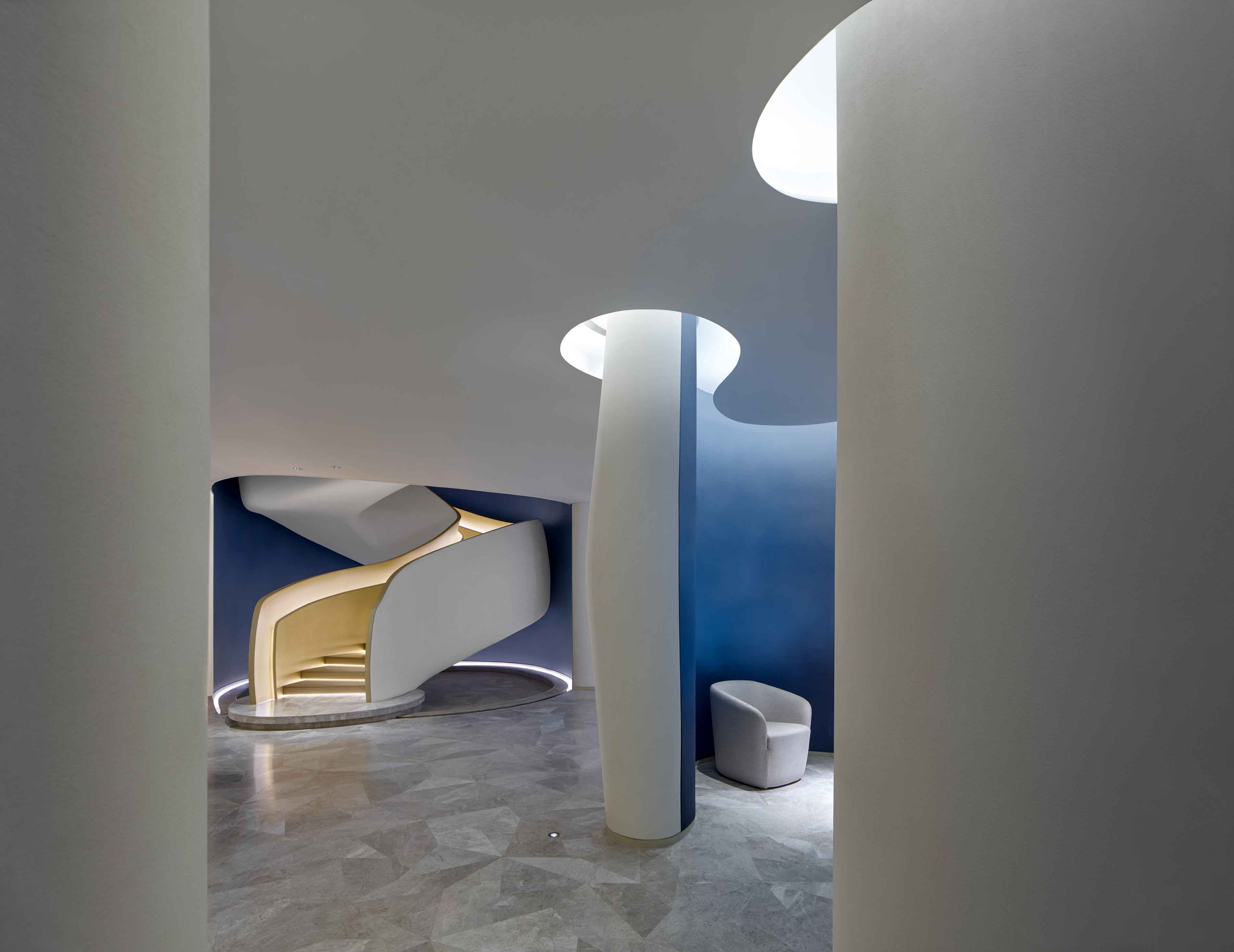
Since its completion the Four Seasons Kuwait Burj Alshaya has picked up numerous design awards, and the design duo have since focused their efforts on another emerging market with grand ambitions. “We’re close to finishing two incredible projects in China,” Mr. Pushelberg says — the Grand Hyatt Shenzhen, located on top of the 350-m South Tower of the Ping’An Financial Center, and the Rosewood Guangzhou, which will occupy the top 16 floors of the city’s tallest building.











 Back
Back
